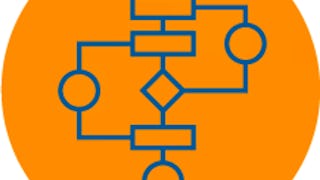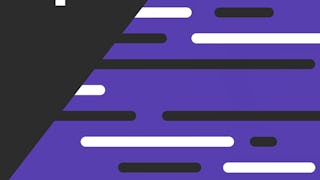Build on the software engineering skills you learned in “Java Programming: Solving Problems with Software” by learning new data structures. Use these data structures to build more complex programs that use Java’s object-oriented features. At the end of the course you will write an encryption program and a program to break your encryption algorithm.

Enjoy unlimited growth with a year of Coursera Plus for $199 (regularly $399). Save now.

Java Programming: Arrays, Lists, and Structured Data
This course is part of multiple programs.



Instructors: Andrew D. Hilton
165,774 already enrolled
Included with
(3,207 reviews)
Skills you'll gain
Details to know

Add to your LinkedIn profile
14 assignments
See how employees at top companies are mastering in-demand skills

Build your subject-matter expertise
- Learn new concepts from industry experts
- Gain a foundational understanding of a subject or tool
- Develop job-relevant skills with hands-on projects
- Earn a shareable career certificate

There are 5 modules in this course
Welcome to “Java Programming: Arrays, Lists, and Structured Data”! We are excited that you are starting our course to learn how to write programs in Java, one of the most popular programming languages in the world. In this introductory module, you will hear an overview of this course and be introduced to the supporting resources available.
What's included
1 video2 readings
In this module, you will learn about the basics of cryptography, the science of keeping information private and secure. You will learn about simpler cryptographic systems, which were used from the Roman Empire through the early 1900s. You will learn how to implement these ciphers, as well as how to break them. To solve these problems, you will work more with processing Strings, but also learn about arrays—a way to store an indexable sequence of elements. You will be able to: (1) combine Strings using concatenation; (2) build Strings within a Java program using StringBuilder; (3) use arrays to store and manipulate collections of data; (4) refactor your programs for improved organization using object-oriented principles; (5) and practice effective algorithm design.
What's included
21 videos5 readings4 assignments
After completing this module, you will be able (1) to program a word frequency counter to analyze any input text file, (2) to select and substitute words from a list into a document template using both ArrayList and HashMap, (3) to create new lists to use in templates, (4) to recognize brittle code, and (5) to improve code with flexible, object-oriented design. You will gain these skills in the framework of developing a randomly generated story that we call GladLibs. You may discover that bald lions change peoples’ lives, or that fluffy dinosaurs get things done in a jiffy. We hope you have fun developing your Java skills this week!
What's included
13 videos4 readings3 assignments
In this module, you will learn about how web server logs store information about visitors to a website, and you will write programs to access information like user IP address, date and time of access, and more. Using Java programs you write in this module, you will be able (1) to read information from a web server log, (2) to count the number of unique visitors to your website, and (3) to count the number of times each visitor uses your website.
What's included
15 videos4 readings4 assignments
In this module, you will develop a program to break the Vigenère Cipher, a more complex version of the Caesar Cipher. You will improve your program in three stages: first decrypting messages where you know the language and key length, then adding the capability to handle messages with unknown key length, then extending the program to handle messages in a range of possible languages. Through this project, you will be able (1) to effectively use HashSet and HashMap, (2) to expand an algorithm from solving a simpler problem to handle broader, more complex problems, and (3) to design and modify program code involving a more complex collection of classes, methods, and data.
What's included
4 videos6 readings3 assignments
Earn a career certificate
Add this credential to your LinkedIn profile, resume, or CV. Share it on social media and in your performance review.
Instructors


Offered by
Explore more from Software Development
 Status: Free Trial
Status: Free Trial Status: Free Trial
Status: Free Trial Status: Free Trial
Status: Free Trial Status: Free Trial
Status: Free Trial
Why people choose Coursera for their career




Learner reviews
3,207 reviews
- 5 stars
75.07%
- 4 stars
19.18%
- 3 stars
3.21%
- 2 stars
0.96%
- 1 star
1.55%
Showing 3 of 3207
Reviewed on Sep 4, 2020
Learned a lot from the course, but the amount of programming assignment and number of Qs to complete the module (especially week2) was absurdly large. Could be split into separate sessions.
Reviewed on Nov 25, 2025
Great teaching, great presentations, interesting and engaging problems, and great assignments that really test your skills. I have been impressed with this course.
Reviewed on Jan 12, 2020
This is my second Duke course, i'll take them all they are great. And i like the feel when i finish it. I'm still a student, i finish one course every two weeks.
Frequently asked questions
No. Completion of a Coursera course does not earn you academic credit from Duke; therefore, Duke is not able to provide you with a university transcript. However, your electronic Certificate will be added to your Accomplishments page - from there, you can print your Certificate or add it to your LinkedIn profile.
To access the course materials, assignments and to earn a Certificate, you will need to purchase the Certificate experience when you enroll in a course. You can try a Free Trial instead, or apply for Financial Aid. The course may offer 'Full Course, No Certificate' instead. This option lets you see all course materials, submit required assessments, and get a final grade. This also means that you will not be able to purchase a Certificate experience.
When you enroll in the course, you get access to all of the courses in the Specialization, and you earn a certificate when you complete the work. Your electronic Certificate will be added to your Accomplishments page - from there, you can print your Certificate or add it to your LinkedIn profile.
More questions
Financial aid available,






